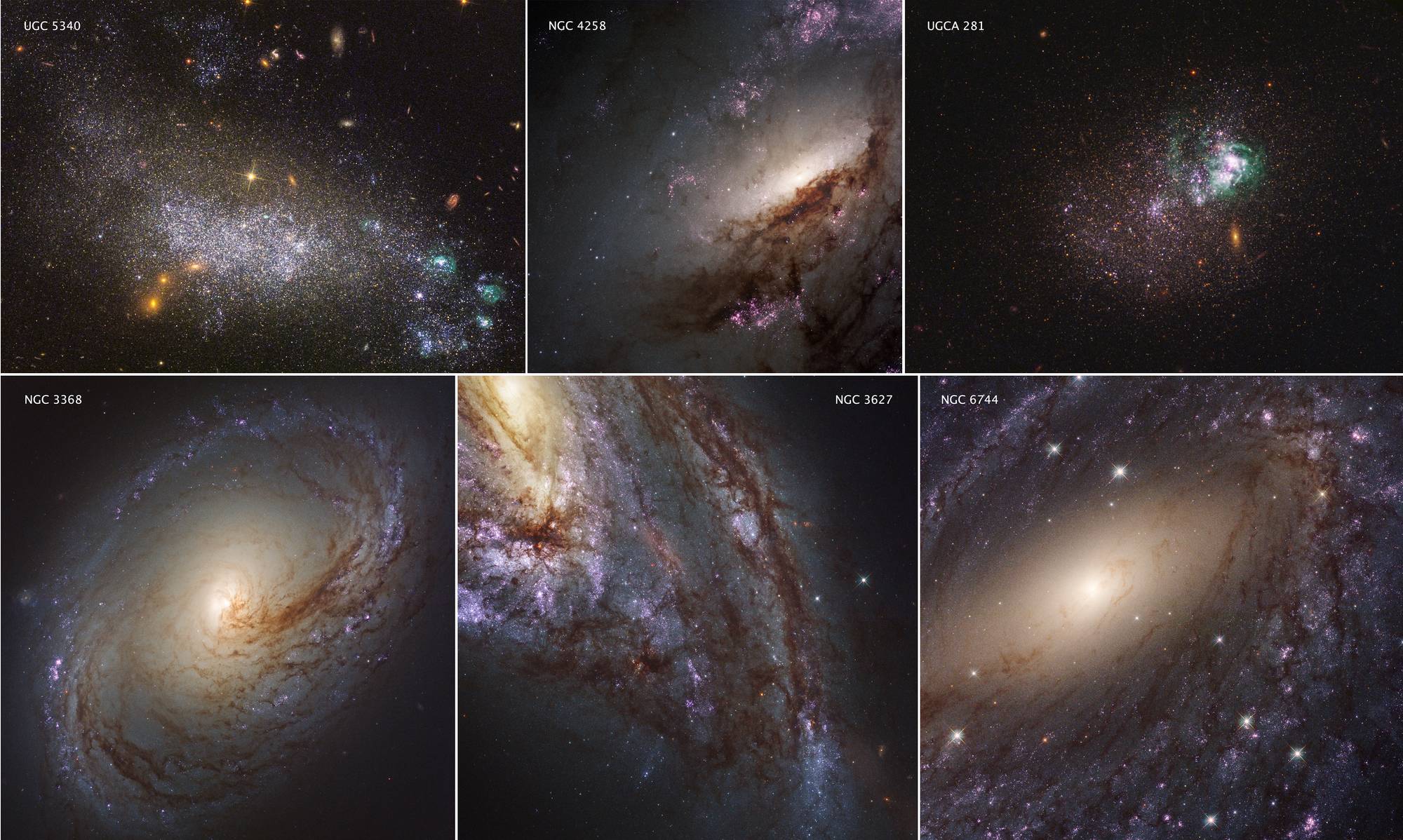
Astronomers reveal the largest ever survey of 50 galaxies in ultraviolet light
Researchers have published the largest ever survey of stars and galaxies in ultraviolet light depicting our local universe. The survey contributes over 50 active galaxies in high definition snapped by NASA’s Hubble Space Telescope. Touted as LEGUS or Legacy ExtraGalactic UV Survey, the project captures more than 8,000-star clusters and 39 million hot blue stars and 50 active galaxies located within a 60 million light year radius around our planet.
As per the survey, there are stars ranging from one to several billion years old while some are grouped together forming structure larger than ten times the structure found in our Milky Way galaxy and much more. The team involved in LEGUS project ascertain more than 500 candidates of which, these galaxies were shortlisted based on their mass, size, metallicity, star formation, rate, elements heavier than helium and hydrogen and other parameters to prepare the catalog of galaxies in high resolution.
According to astronomy professor Daniela Calzetti of the University of Massachusetts Amherst, there has been no survey on stellar population solely observed in ultraviolet light. Ultraviolet light is one of the largest section of the electromagnetic spectrum which is not visible to naked eyes. It is also one of the major precursors towards detecting hottest and youngest star population used by researchers for ages in order to scan through the cosmos.
For LEGUS project, Hubble Space Telescope’s Wide Field Camera 3 and the Advanced Camera were employed in order to capture shortlisted galaxies in UV and visible light over a period of a year. Calzetti further stated that even after we can see that the stars are randomly distributed in a spiral galaxy or any other type of galaxy, it is still orderly structured. There are efficient theories which connect the dots between individual stars in star clusters marking the ordered structure between the stars and more.
As for the survey, researchers captured the photos of the galaxies where it captures red and orange visible lights with longer wavelengths as well as infrared light which reveals the signatures of the stars behind the cloak of dense gas and dust which usually blocks the view when seen using visible light. According to the survey, it is trying to find the link between the gases and star formation which could reveal information about galaxy evolution and more.
The data collected by the team at LEGUS project will come handy when NASA will finally launch its anticipated James Webb Space Telescope in 2020 which has a massive mirror and instruments sensitive enough to cause longer infrared lights that will enable the scientists to peep into the younger stellar population towards the birth of our universe.


